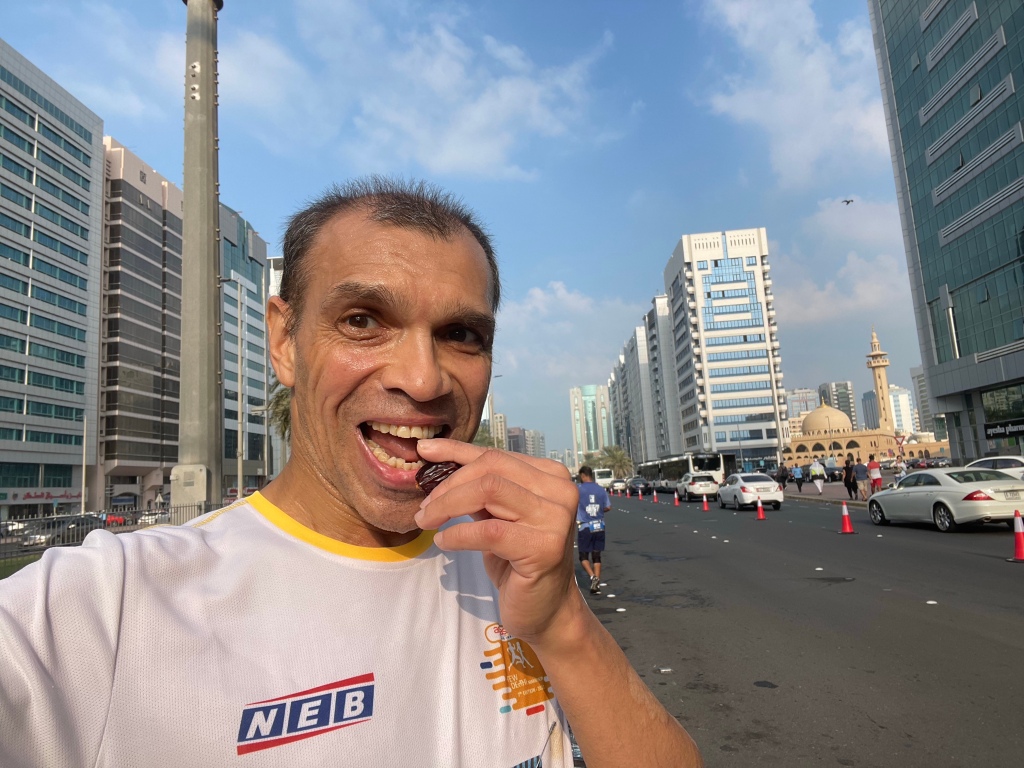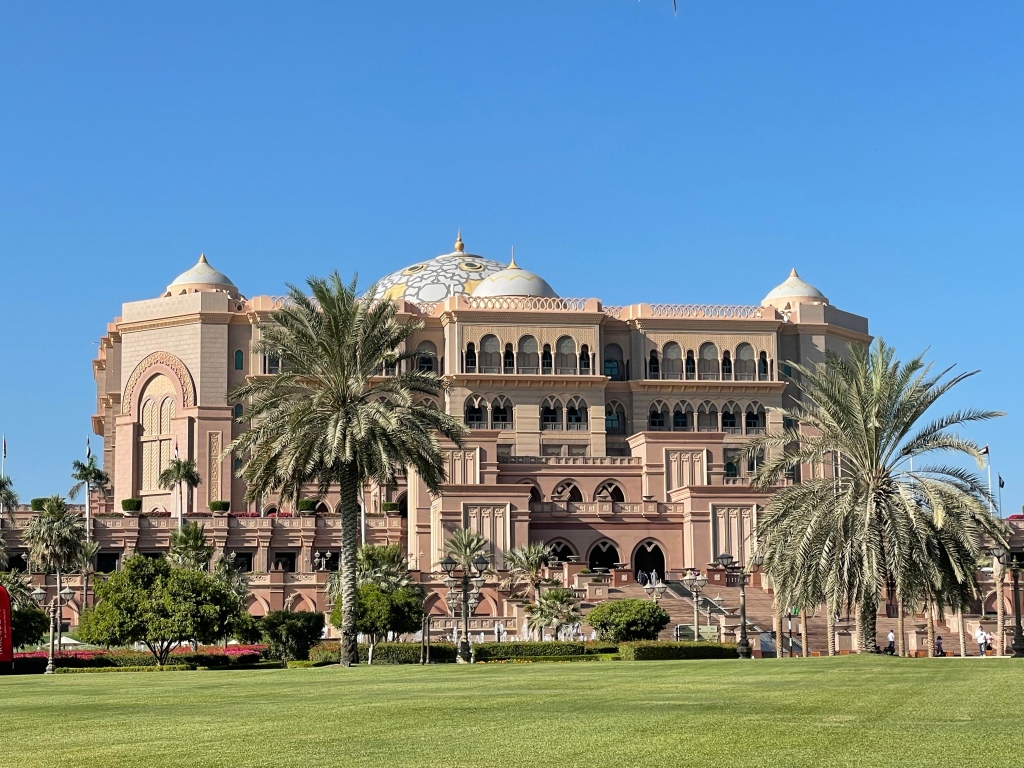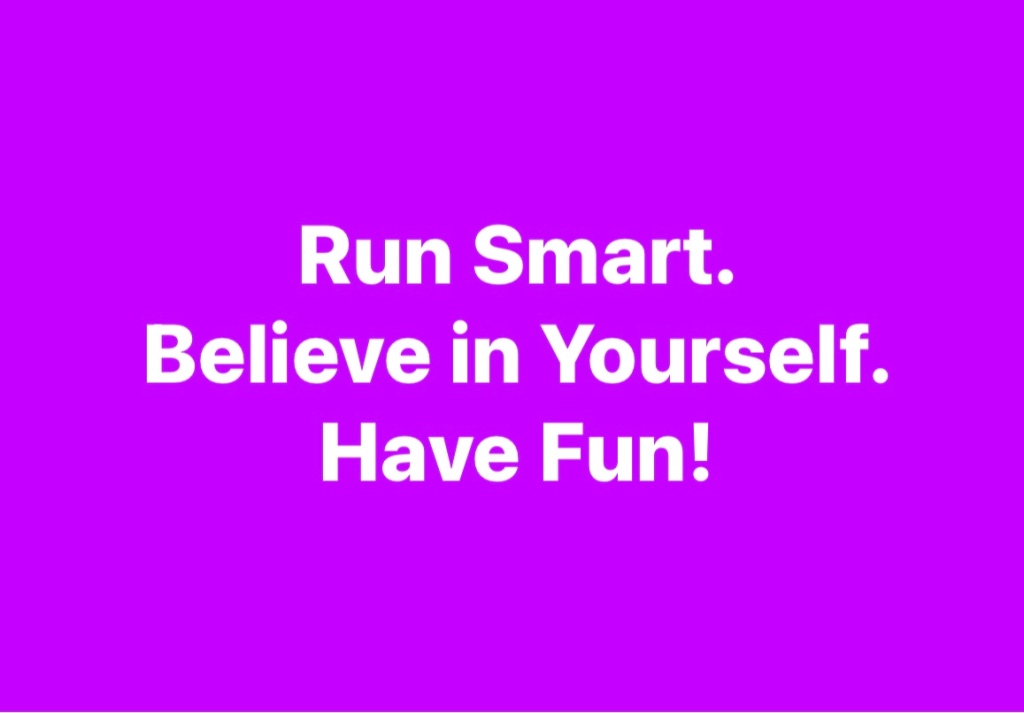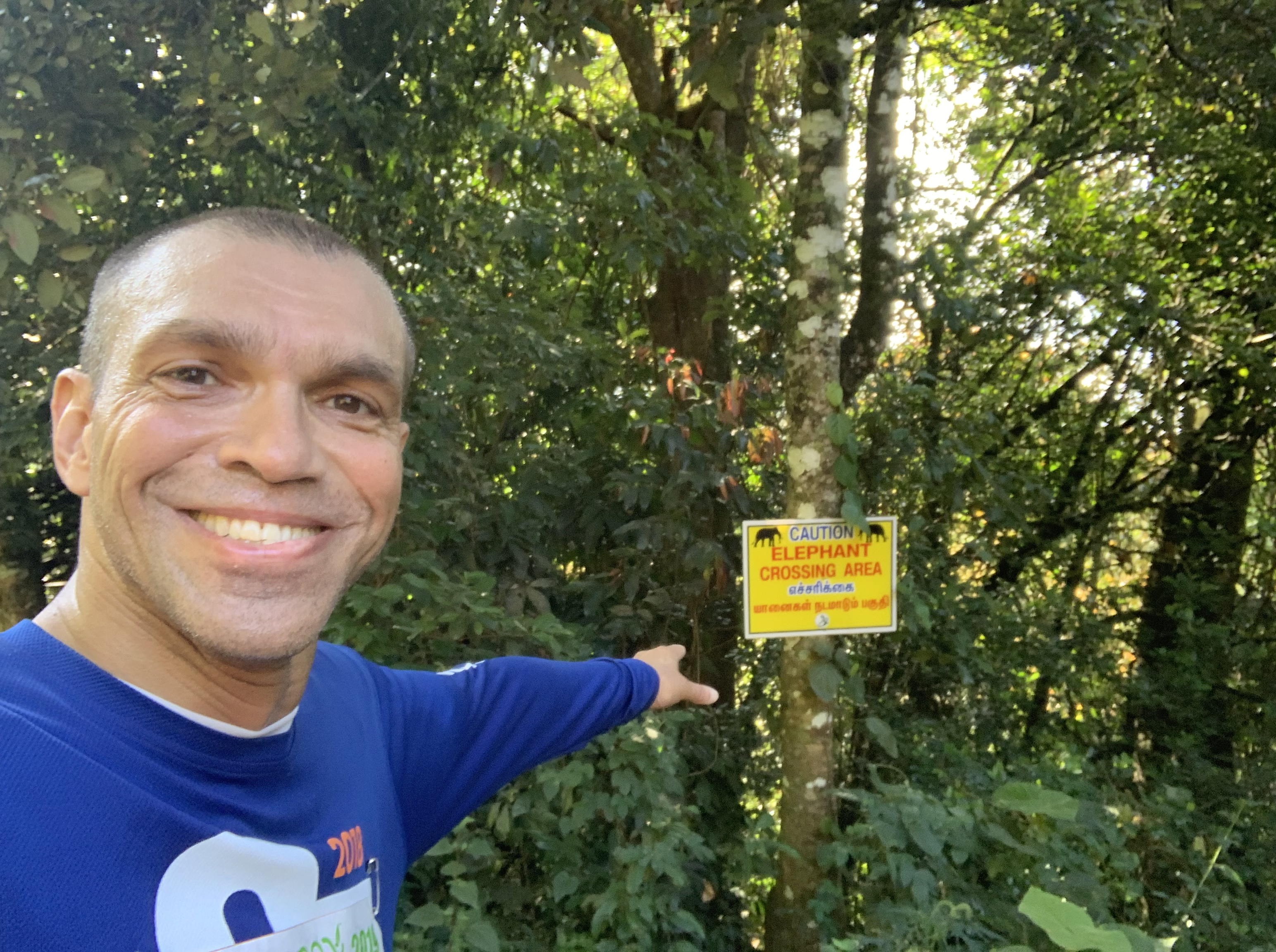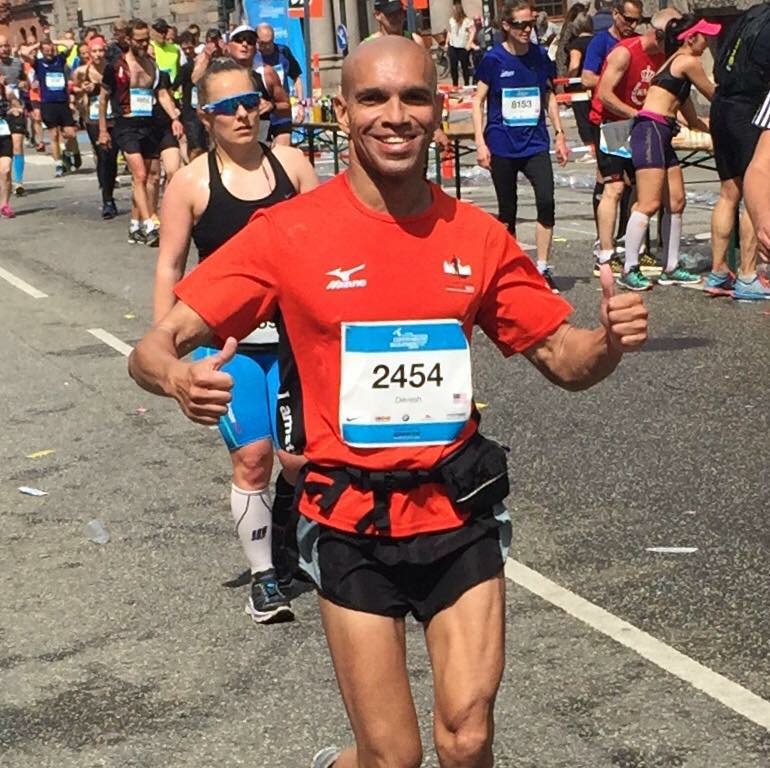I ran my first ultra marathon, the Two Oceans Marathon in Cape Town, South Africa — a 56 K (35 mile) race, on April 20, 2019.
After completing 100 marathons last fall, I needed to have a new goal… and when a friend signed up for the Two Oceans Marathon last fall, that seemed like a logical one to pursue. I had actually tried to register for it a year ago, but the race had filled up in 3 days, and I had missed the cutoff. Luckily I made it in this year.
Getting to Cape Town was painful. There are no direct flights from San Francisco… and while I could have flown via New York, that option was too expensive, and so I found a multi-city deal on United/Lufthansa via Frankfurt for around $1,500 round trip (including adding Johannesburg as an additional destination.) Unfortunately though, it involved two 10-12 hour flights and a 12 hour layover in Frankfurt, for a total travel time of 34 hours each way! Thank goodness I can avail of Lufthansa’s excellent Senator Lounge in the Z concourse at Frankfurt, with its excellent selection of food and drink, sleeping pods, and showers.
I arrived in Cape Town Wednesday morning (the race was on Saturday). I had found a boutique hotel in downtown, the StayEasy Cape Town City Bowl, that was reasonably priced. The hotel was fully booked due to the race, and they did not have a room with one bed as I had requested while reserving. But to compensate, they gave me a room on the top (16th) floor with a view of downtown and the harbor. I was happy!

I went for lunch at the Chef’s Warehouse/Canteen restaurant that was a couple of blocks away. The restaurant is one of the top restaurants in Cape Town, and it was a really nice contemporary Asian fusion lunch. After lunch, I stayed in the hotel/slept for the rest of the day as I was a bit jet lagged.

The next day dawned gorgeous and clear. I went for a short run after breakfast, to the Silo district/quays. It was more of a photo walk than anything, as I was capturing the beauty of Cape Town. After an excellent lunch at an Ethiopian restaurant in downtown, I took an Uber to the Table Mountain aerial cableway. There was a wait of about 35 minutes to go up. The cable cars are similar to the ones used in Palm Springs, CA: there are two of them that can fit 65 persons each, and work on a counter-weight system. After getting to the top, I hiked around a bit, taking in the breathtaking views of Cape Town and surrounding areas. The line getting down was a bit shorter, luckily.

My next stop was the Cape Town International Convention Center, where the Two Oceans Marathon expo was held. The expo was pretty decent, with a large number of exhibitors. Although I was a bit annoyed when a shoe cleaning spray vendor cleaned one of my shoes to demonstrate the product, and left the other one dirty!
After dropping off my bib/race packet at my hotel, I headed out to dinner at an Italian restaurant that was recommended on TripAdvisor, to get an early start to my carbo loading.
I decided to lie low the next day, which was the day before the race… leaving my hotel only for lunch at a tapas place called Fork in downtown (the ostrich tapa was quite good, and carbo loaded on patatas bravas!) and dinner with my friend Christof from San Francisco, who was also running. We ate at a restaurant called Societi Bistro; I had seared kudu (a local antelope with horns) and carbo loaded again with a prawn spaghetti.

Unfortunately, we got the news that due to protests along the route, they changed the route to a different one. The distance was still 56K, but the most scenic parts of the route, Chapman’s Peak and Hout Bay were taken out, and replaced by a longer and higher climb on Ou Kaapse Weg. Also as a result we didn’t really touch the Atlantic Ocean side, and so the name of the race became a misnomer.
The start of the race was about 6 miles from downtown, in an area called Newlands, on The University of Cape Town campus. My hotel had arranged two busses for runners, but it was first come, first served, and I missed getting a ticket for the bus. They had also arranged a breakfast from 4am to 6am… the first time I’ve seen a hotel go to such lengths for runners! I had booked an Uber for 5:30 am (the race started at 6:40). However that turned out to be too late, as due to the demand, my Uber was still 20 minutes away at 5:30. Luckily I saw some runners from my hotel jump into a car where one of them was driving, and I pleaded my way into a spot in the car. Traffic closer to the start was very congested, but luckily we were able to park and get to the corrals by 6:20.

They had five corrals (seedings as they called them); I was in corral D. There were about 40,000 runners who ran the day’s events (they also had a half marathon; originally they also had a 28K x 2 relay, but they cancelled it due to the route change). The race started promptly at 6:40.
The first few miles were a bit congested with the number of runners (they didn’t have wave starts)… even though the streets were wide. Around the 5K mark, we got into the countryside. It had been raining off and on since the previous night, and there was a shower just as the race had started, resulting in a rainbow as we faced Table Mountain ahead. It was a lovely sight, and I took it as a good omen for the race!

There was a shower again, which drenched my socks. There are few things more uncomfortable than wet socks! But the rain let up as we got to the Indian Ocean side (False Bay) around the 16K mark, with spectacular views of the bay. Luckily it didn’t rain again later.

We got to the aptly named fishing town of Fishhoek at the 21K mark. The half marathon ended there, and the marathoners took a right to head inland. We passed through the town for a bit, before beginning the long climb of Ou Kaapse Weg around the 27K mark. I got to the half way mark a few minutes before the 3 hour mark. My main concern before the race had been the strict gun to mat 7 hour cut off. (They extended it by half an hour due to the route change and the added difficulty of the course.) Based on my recent marathon times, which were in the 4:20 to 4:50 range, I should have had no problems… but the unknown factor of how my body would handle running beyond 42K was at the back of my mind. So I was encouraged by my time at the half way mark, and felt optimistic of finishing before the cutoff.

After a short downhill, however the next 4K was a relentless, long, incline. It wasn’t too steep, but the length of it just wore you out. And to add to the issues, the water stations were few and far in between on this stage, and they ran out of water at a couple of them. (The organizers apologized after the race via email, saying that due to environmental reasons on that stretch, they could not distribute the plastic water sachets which they did at other stations, and they misjudged the amount of water/cups). They did have lots of Coca Cola though; Powerade being the electrolyte sponsor. I cannot remember the last time I drank so much Coke! I walked large portions of the climb, as did many other runners. Finally we crested just before the 33K mark.

The next 3K were a nice downhill with great views. The next few Km were mostly flat, and I got to the marathon distance cutoff at 4:45, which was decent going, and I was getting increasingly confident about finishing under 7 hours.
The final climb of the race was through the region of Constantia, which lasted for about 3K from 45K to about 48K. Luckily the rest of the race was mostly downhill from there. Just before the 52K mark we passed by the Kirstenbosch Botanical Gardens, a World Heritage Site for the uniqueness of the plant species found there.
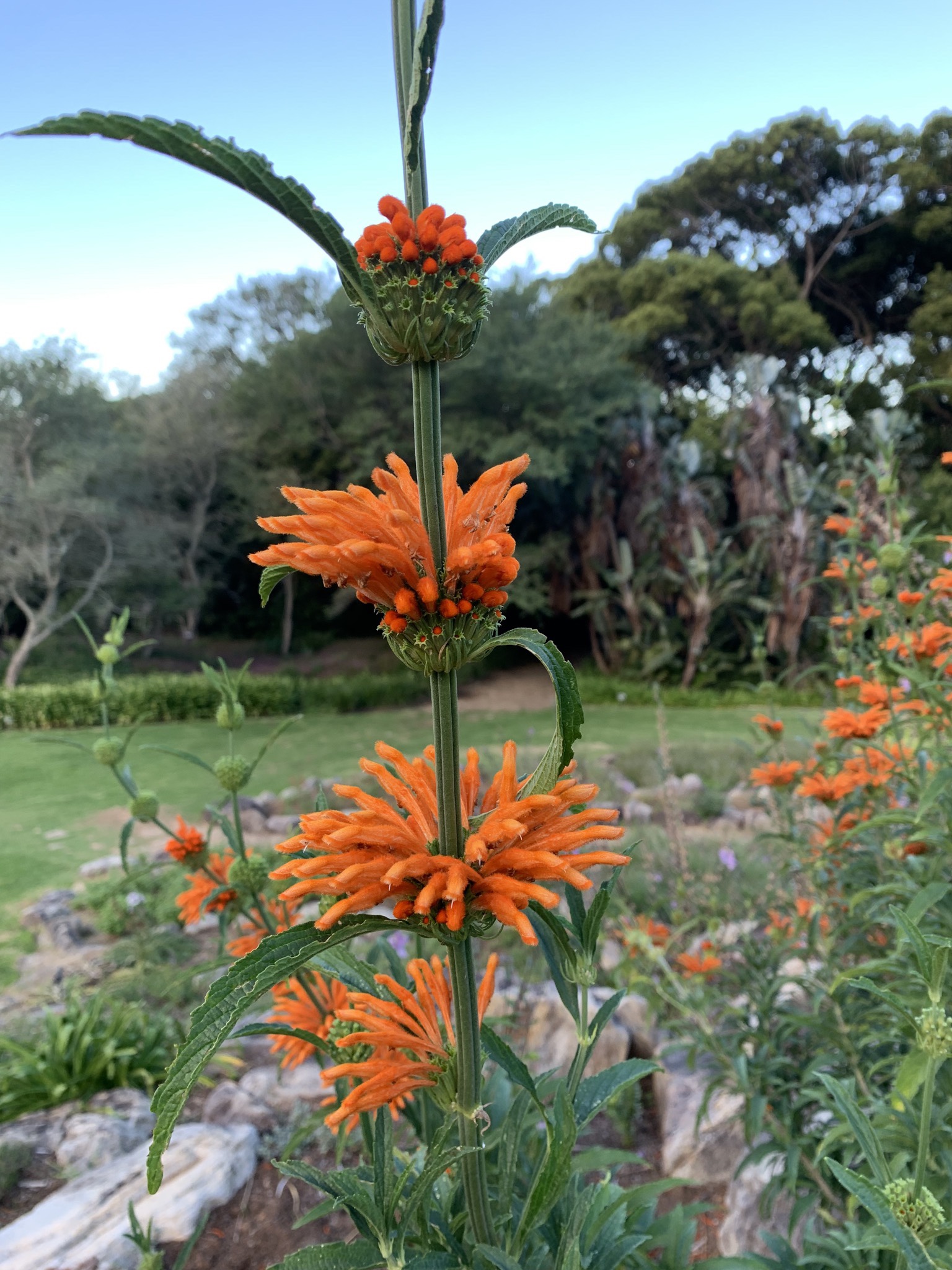
We got back to Cape Town and the finish on the University of Cape Town campus. They had erected bleacher seating near the finish, which was spectacular with the lovely university buildings in one side. I was pleased to finish in 6:32, given my self-doubts about my first ultra, the route change, and the early rain.

The regular post-race refreshments were rather meager, with just a couple of packets of biscuits/gummies chews. Luckily, international runners had been given wrist bands for a special hospitality tent, where they had an egg sandwich, a muffin, potato chips, an apple, and beer.
I was dreading getting an Uber going back given the large number or runners, but surprisingly didn’t have to wait too long.
My hotel was adjacent to a sister hotel called Sun Square, and we could use our room key to go to the 14th floor pool/bar there. The bar had a wrap around outdoor terrace with spectacular views. I had been wanting to go there for Happy Hour ever since I got to Cape Town, but had kept myself in check… but finally indulged with a large cosmopolitan that only cost $3.50!
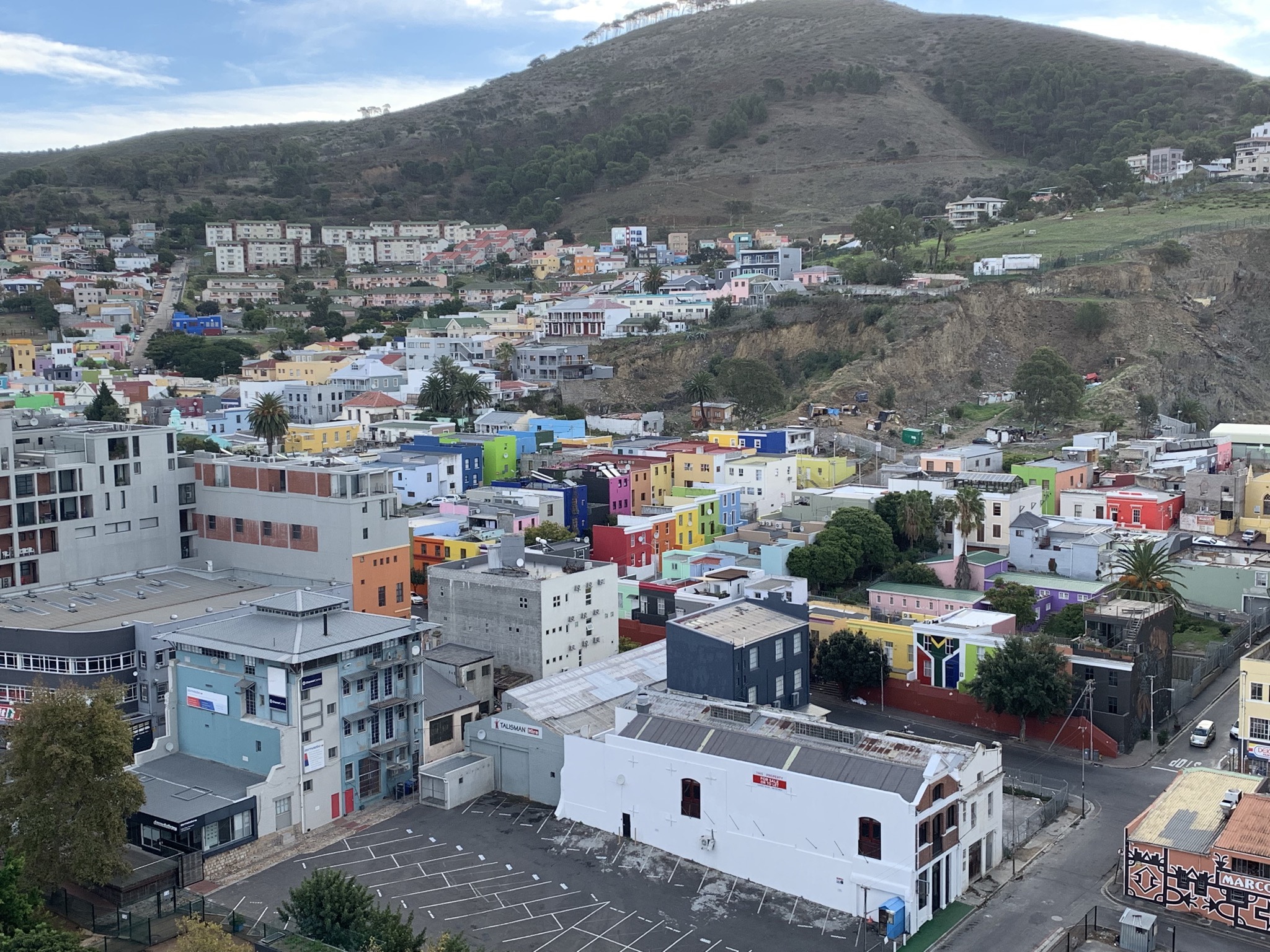
I had an early dinner at a tapas/wine bar near my hotel called Bouchon (no relation to the restaurant by the same name in the Bay Area). After dinner I took a quick “disco nap” before heading out to check out the gay scene in Cape Town.
My first stop was a nice cafe/bar called Cafe Manhattan, just a 7 minute walk from my hotel. I really liked the ambience there. I then headed to Crew Bar, just a couple of blocks away from there. It was a bar/dance club, but was completely empty when I got there (which was admittedly early for a Saturday night at 10 pm). I didn’t have the patience to wait, and had to get up early the next morning for a tour, so ended up returning to the hotel.
I had booked a full day group tour of the Cape Peninsula the next day through my hotel/a tour agency called African Eagle. There were 11 of us in a van, which picked me up at 8:30. We headed south via the western coast of the Cape peninsula, passing through the rich communities of Clifton and Camps Bay. Our first major stop was Hout Bay, which is a fishing community. It was originally part of the race route, before they diverted it. After seeing sea lions there, we climbed up to the spectacular lookout near Chapman’s Peak, another road we should have run on the previous day but didn’t. The road reminded me of Highway 1 in California, with some spectacular views and Swiss engineering to keep boulders from falling on the road.

We made our way further south to the entrance to the Cape of Good Hope. There was a long queue at the entrance for vehicles; although we still got there before the worst a few hours later. We made our way to the southernmost point of the Cape Peninsula, Cape Point, where there is a lighthouse perched on top of a steep cliff. It was about a half an hour round trip hike to the lighthouse from the parking lot, but well worth it for the views. After the hike, I had lunch at the restaurant there… an upscale restaurant specializing in seafood and local meats, with spectacular views. The meal was terrific and very satisfying, and not too expensive either (actually a fraction of the cost of the restaurant at Post Ranch Inn in Big Sur, the most apt comparison!)

After lunch, we drove down to the actual Cape of Good Hope, which is the southwestern most point of the peninsula. After photos with the sign there, we headed north via Simon’s Town, a quaint Dutch/British town, where the Boulders penguin colony was located. There was a short wait to get in, but we got to see the African penguins.

We drove back up north, crisscrossing the marathon route at Fishhoek, before our final stop at the Kirstenbosch Botanical Gardens. The gardens were very pretty, but unfortunately we only got to spend about 45 minutes there as it was getting late. It was also getting cold, with the eastern slopes of Table Mountain getting enveloped in clouds. So I had a warm latte at the restaurant there, Moyo, which with its high ceilinged wooden structure and the dramatic backdrop reminded me a bit of the Dining Room at the Ahwahnee in Yosemite.
We returned to my hotel by 6pm. I went back to the 14th floor bar in my hotel for a glass of wine, before having dinner at a restaurant nearby called Burger & Lobster. I had the lobster burger, and a gin/strawberry based cocktail… both of which were delicious.
The next day I had a group tour of the Cape Winelands. There were 7 of us; we started out by visiting the Stellenbosch region first, about 45 minutes from Cape Town. The first winery we went to was called Zevenwacht; we had a wine and cheese pairing with four of their wines. Their wines were inexpensive but decent. Our next stop was the town of Stellenbosch. Founded by a Dutchman named Simon van der Stel, it still retains its quaint Dutch character. Our next stop was a French style winery called Marianne. We had a wine and charcuterie pairing, with three reds. I liked their Cabernet Sauvignon and bought a bottle.
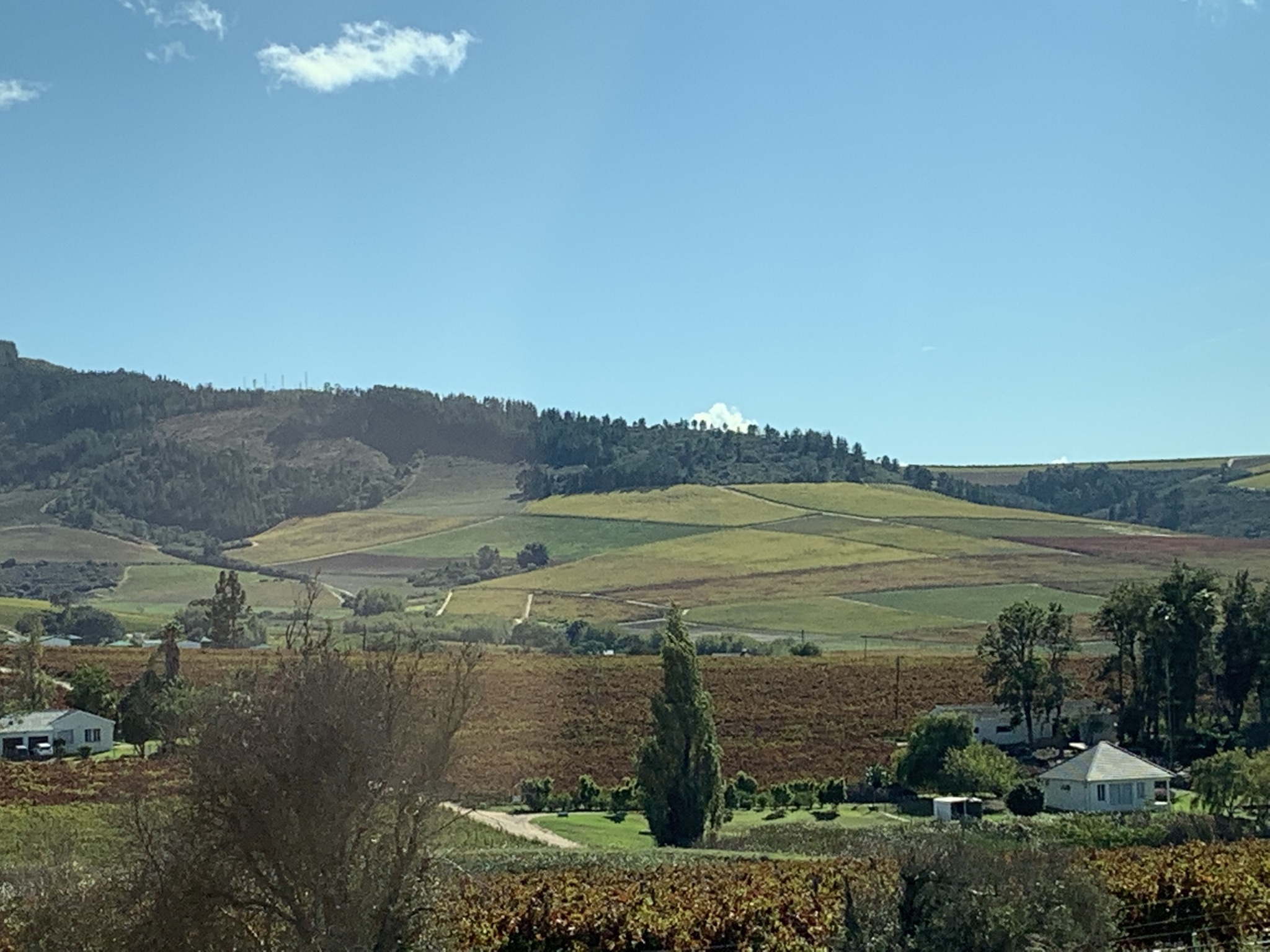
We left Stellenbosch for the Franschhoek region, named after French settlers there. The town reminded me a bit of St. Helena in Napa, with upscale restaurants and boutique shops on the main road through town. I had an excellent lunch at a restaurant called Reuben, where the chef apparently trained under Gordon Ramsay of Britain. After lunch we took the wine tram: a double decker bus like tram that really had no purpose other than being a tourist trap. But they served us a glass of bubbly on the short 10 minute ride on it to the stop for our last winery, from where we took a tractor led wagon to the winery, called Rickety Bridge.

On our way back, we stopped at the prison where Nelson Mandela was held during the final 2 years of his 27 years in prison, for a photo op at his statue outside. (Unfortunately we did not have time to go in.) We drive back to Cape Town and got back to the hotel by 6.
After another cocktail at the rooftop bar, I had dinner at a restaurant near my hotel called the Africa Cafe. It was a bit of a tourist trap as well; they served you a 15 course feast comprising dishes from nearly as many African countries, along with African musical/dance entertainment. The food was ok, but it was an obscene amount, and I could barely finish a quarter.

Had I had more time, I would have done a bit more city sightseeing in Cape Town city itself, and taken the ferry to Robben Island, where Mandela spent most of his years in prison.
My flight to Johannesburg was early the next morning. Usually I stay in hotels near the City Centre; however nothing really appealed to me there, and so I had booked an AirBnB in a neighborhood called Melville, about 3 miles north west of downtown. It was actually quite nice and stylish, and its name, Motel Mi Pi Chi, was really a misnomer.
It is important to schedule downtime while traveling. After three full days, I needed a day off, and so the only time I left the hotel that day was for lunch and dinner. Lunch was at a restaurant called Lucky Bean on the main street in Melville, 7th Street. It was actually ranked in the top 10 in Johannesburg, and the food was pretty good. Dinner was at a contemporary Asian restaurant called the Great Eastern Cafe, and was not bad as well.
I had not run since the race, so the next morning I woke up early and did a short run/walk in the (free) Johannesburg Botanical Gardens, which happened to be close to my hotel. After breakfast at the hotel, I went to an appointment-only private museum called the Lindfield Victorian House. It was housed in a 1910s Victorian, but stepping inside was like stepping back an 100 years in time. The house was full of objects from that era, and the owner/tour guide, a woman named Katharine Love, did a pretty good job of narrating.

My next stop was the must see museum in South Africa, the Apartheid Museum. It chronicles the history of apartheid, along with that of Johannesburg, from its start as a mining town in the 1880s. And an added bonus was the special exhibition on Nelson Mandela. I spent a good 3 hours or so at the museum, although that included my cross cultural lunch there of an ostrich burger with mango atchar (Indian style pickle).

My last museum of the day was the Constitution Hill Human Rights Precinct. The museum actually consisted of 3 former prisons and the Constitutional Court. The three prisons included Number Four, which housed mostly black prisoners, but also housed Mahatma Gandhi briefly; the Old Fort prison which mostly housed white prisoners, but had Nelson Mandela there briefly in 1962; and a Womens’ Prison.

I had dinner at a very hip microbrewery/Asian fusion tapas restaurant in the former mining district, called Urbanologi. The place used to be a mining supplies warehouse, but was repurposed 3 years ago to a brewery and restaurant. (It reminded me of similar repurposings of the former mills in Mumbai). The space, the beer and the food were all terrific.
The next morning I had a very early start as I had booked a one day group safari of the Pilanesberg National Park, about 2.5 hours away. My van picked me up at 5:30am. After picking up the remaining 7 guests, we got to the park around 9am. We transferred to an ATV there. Our morning session lasted 3.5 hours or so. We saw two of the “Big Five”: elephants and white rhinos, but no lions or leopards. There were plenty of zebras, giraffes, wildebeest, and antelopes, including impalas and kudus. There were a lot of birds there as well.

Lunch was included as part of the safari; we could choose between several sandwiches or burgers. The post lunch safari was short, and lasted only about an hour. We saw some baboons and more of the same animals as the morning.

We returned back by 7pm. For my last dinner of the trip, I decided to do something more elegant, and so went to a restaurant called Level Four, which was on the fourth floor of a really nice hotel called 54 on Bath in the Rosebank area of Johannesburg. The food was great.
On my last day here, I started out at the Satyagraha House. This was a house where Mahatma Gandhi lived in 1908-09. Part of it is now a B&B, which maintains the house. The house was charming, and it was great to get a refresher course about Gandhi’s 21 years in South Africa.
I had lunch at an Indian restaurant nearby called Thava. I had been told to try “bunnychow”, a local street food dish of mutton curry in a bread bowl, but the restaurant was too upscale to offer that.
After lunch, I went down to an area called “Arts on Main”, which is an inner city urban revival project. After walking around there for a bit, I still had some time to kill before picking up my luggage and heading to the airport, and so I went to SAB World of Beer for a tour and tasting.

The tour was rather Universal Studios/Disney-esque, with sets and painful preview films you had to sit through, but at $9 for the tour and two beers, it was hard to argue with. And did you know that SAB owns pretty much all the world’s major beer brands, including Becks, Budweiser, Castle, Corona, Hoegaarden, and Stella Artois, to name just a few?! I had a Carling Black Label lager, and Leffe, which is their highest end Belgian style beer. Both were quite good.

Besides the race, the scenery in/around Cape Town and the tourist activities, I must say that I really enjoyed my interactions with almost all the Africans I met; whether they were Uber drivers, hotel staff, restaurant waiters, or others. They seemed sincere, genuine, and helpful. This was my first trip to Africa, and I will definitely be visiting other parts of Africa in the years to come. And I hope to run the Two Oceans Ultra again, the next time hopefully on the original route!














